One of the (few) benefits of this whole quarantine/lockdown thing we’ve endured so far in 2020 has been the chance to get to know new people. Granted, not in real outdoor life, but in an online capacity. During this period, I had a video call/tea session with one Joe Stanek, co-purveyor of the company Aera Tea. (The “Aera” was an Olde World-y form of “Era”, which I thought was kinda cool.) They were unique for two reasons—two regional reasons. They sourced teas from both Nepal and Yunnan.
Nepal is one of my go-to regions, so that occupied the body of our tea-centric conversation. Joe offered to send me examples of their wares. I asked if they possessed more than one from a particular farmer. He confirmed that they did, and I giddily mentioned that was totally my wheelhouse.
He kindly passed on two whites from one of their growing partners.

Both teas hailed from the Ilam region of Nepal, and were the creations of one Mr. Rai—who managed a 12-acre plot as well as a small factory for processing. For his wares, his own estate provides half the green tea leaf required, while the rest is acquired from smallholder farms in the area. At a just compensation, of course. Methods of propogation and yield administered by Mr. Rai and the contributor farms are (mostly) organic.
A week after we talked, I received both whites; one dubbed “Daydreamer”, the other called “White Orchard”.

Both hailed from the second flush growing season of 2019. A fact that I was a little hesitant about. Like Darjeeling teas (which shared similar terroirs and techniques), Nepalese teas didn’t age well. Year-old offerings was pushing it. Still, I decided to give them the benefit of the doubt. I’m always in the mood to be pleasantly surprised.
White Orchard
The most white of the white tea offerings, White Orchard was mostly made from Darjeeling inherited chinary clones. A mixed assortment of some of the old school Darjeeling cultivars, like T78. It was plucked and processed in June of 2019, but smelled like it came from a sooner pluck.
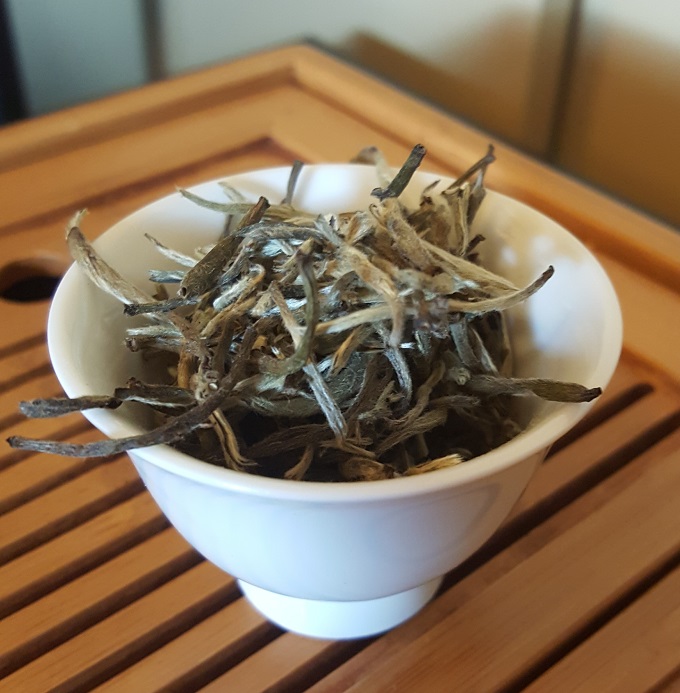
The leaves for the White Orchard were—well?—buds, really. This was a Silver Needle (or Tip)-inspired white tea, to be sure. However, unlike other Himalayan tippy whites I’ve encountered, the aroma differed considerably. Well, not out of character, just more character; more unique, as well. I whiffed vanilla and citrus. My mind immediately went to childhood creamsicles.
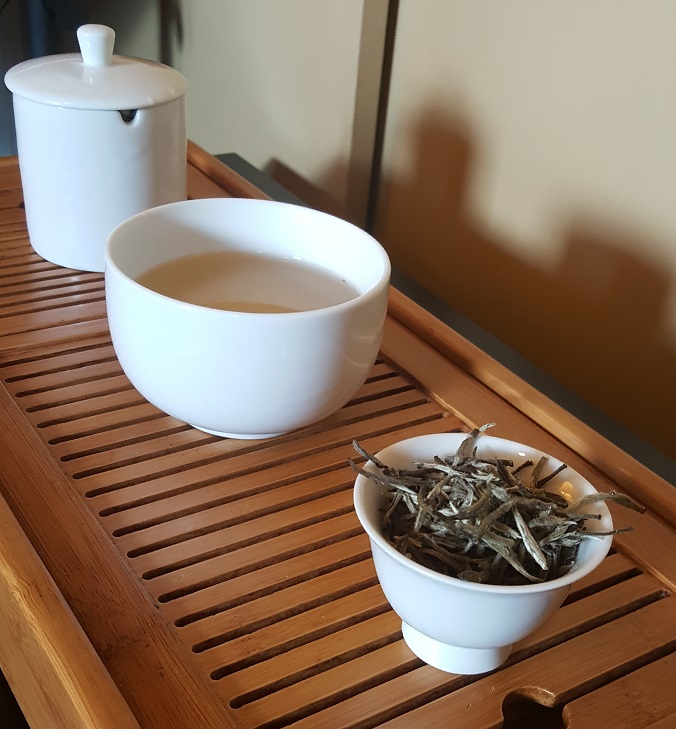
The liquor brewed up to a typical, white tea-ish pale yellow with a sweet aroma that tickled a bit from the mild amount of steam wafting from the cup. At five minutes, I worried that the flavor would be astringent, but I was pleasantly surprised. The forefront was immediate in its delivery of sweetness, and the peach notes (the vendor touted) showed up right at the top note, and throughout there was this creaminess from start to finish. I was reminded of some assamica-based Vietnamese whites I sampled not too long ago.
Daydreamer
This reminded me of what I always associated with Nepalese whites, and its production info echoed that notion. This was produced entirely from the Darjeeling AV2 cultivar; known for its punchy, floral aromatics. That fact, coupled with the higher oxidation level, gave me the impression of what I was used to. That being, what I usually looked for in a Nepalese . . . well . . . anything.
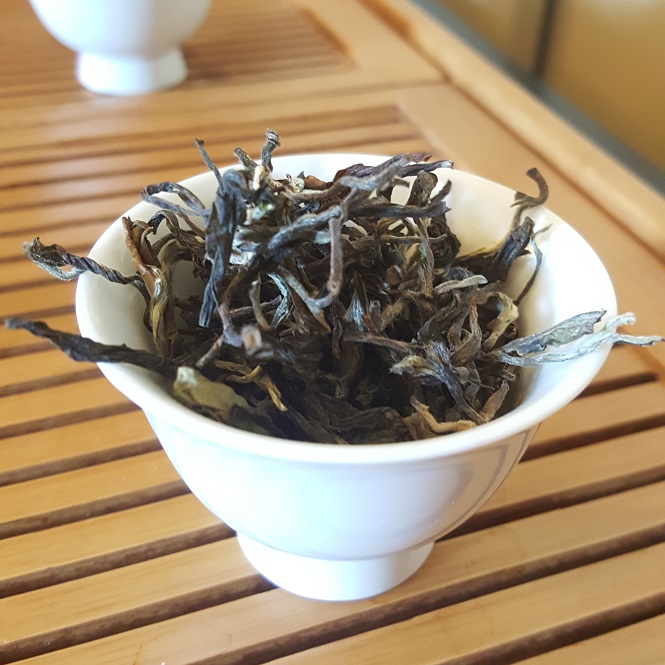
Just as the product description warned, this was definitely a burlier white. The longer oxidation level showed in the color of the leaves, which ranged from pale beige to darker greens and browns. Palette-wise, this looked like a first flush Darjeeling, or the Himalayan take on an “oolong”. The aroma also highlighted a Himalayan bend with a bug bitten honey lean, and a trace of tropical fruit.
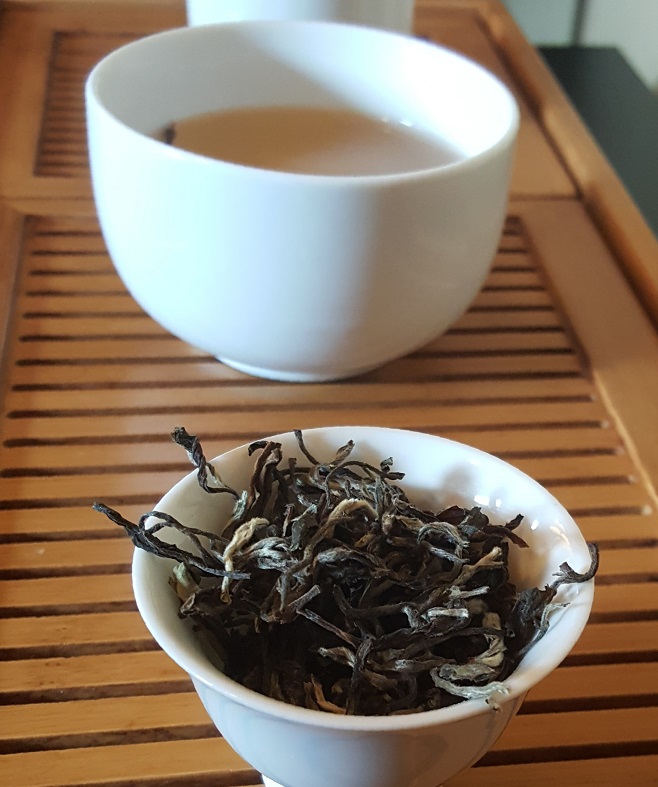
This was more what I was used to when thinking about Nepalese whites. The liquor colored amber, almost to what a normal oolong infusion would look like. The aroma was straight-up Himalayan muscatel with a spicy bend. Taste-wise, it introduced itself with a pleasant astringency that kowtowed once the wine-grapy, heathery profile came out for its curtain call. Compared to its budding sister, it also possessed more body throughout.
Did I have a favorite?

Honestly, no. (That’s been happening a lot.) Both flavor profiles were on the same level, if in completely different contests. Daydreamer was a daily drinker, through-and-through; a perfect afternoon white. White Orchard was a special dessert, a tea you brought out to impress a date in the early evening. That is, if you both planned on staying up for the evening. (*Le wink*)
Throughout this pandemic quarantine malarkey, tea has been a bit of a mindful solace. Corresponding with tea people has helped with that. The fact that I received tea in conjunction with some of those correspondences was just icing on the proverbial dessert. Plus, some of those were teas that tasted like dessert. I have no idea where I’m going with this other than closing with an expression of gratitude.
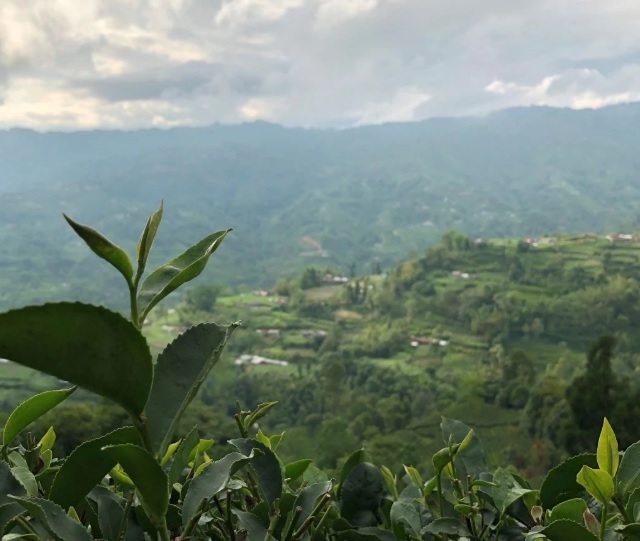
To the leaf and the purveyor who plucked it, and the vendor who let me drink it.
To buy White Orchard, go HERE.
To buy Daydreamer, go HERE.
Leave a Reply